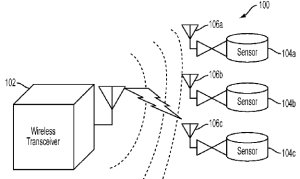Simple hardware modification eliminates passive RFID tag interference
Radio-frequency identification (RFID) systems transmit data wirelessly between a reader and a tag/sensor attached to an object. The purpose is to identify and track the object, and sometimes to collect and transmit information about the object’s environment.
The tag may either be “active”, having its own source of power, or “passive”, relying solely on the RF energy emitted by the reader to generate a response signal. Each system has advantages is certain applications. In general, passive tags are much smaller, cheaper and last longer. One the other hand, because all of the tags within a vicinity respond when the reader emits an interrogating signal, multiple tag signals interfere with one another and may be difficult for the reader to separate.
Current interference management methods reduce passive RFID interference to some extent, but none eliminate it. In each case, residual interference remains and the mitigation become less effective as the number of tags in the system increases.
This new technique and device introduce a simple diode or transistor between the tag/sensor and the antenna that effectively blocks the low-amplitude cross correlation response of interfering tags, allowing a large number of tags to work in a multiple access network with no need for centralized interference management methods at the reader.

